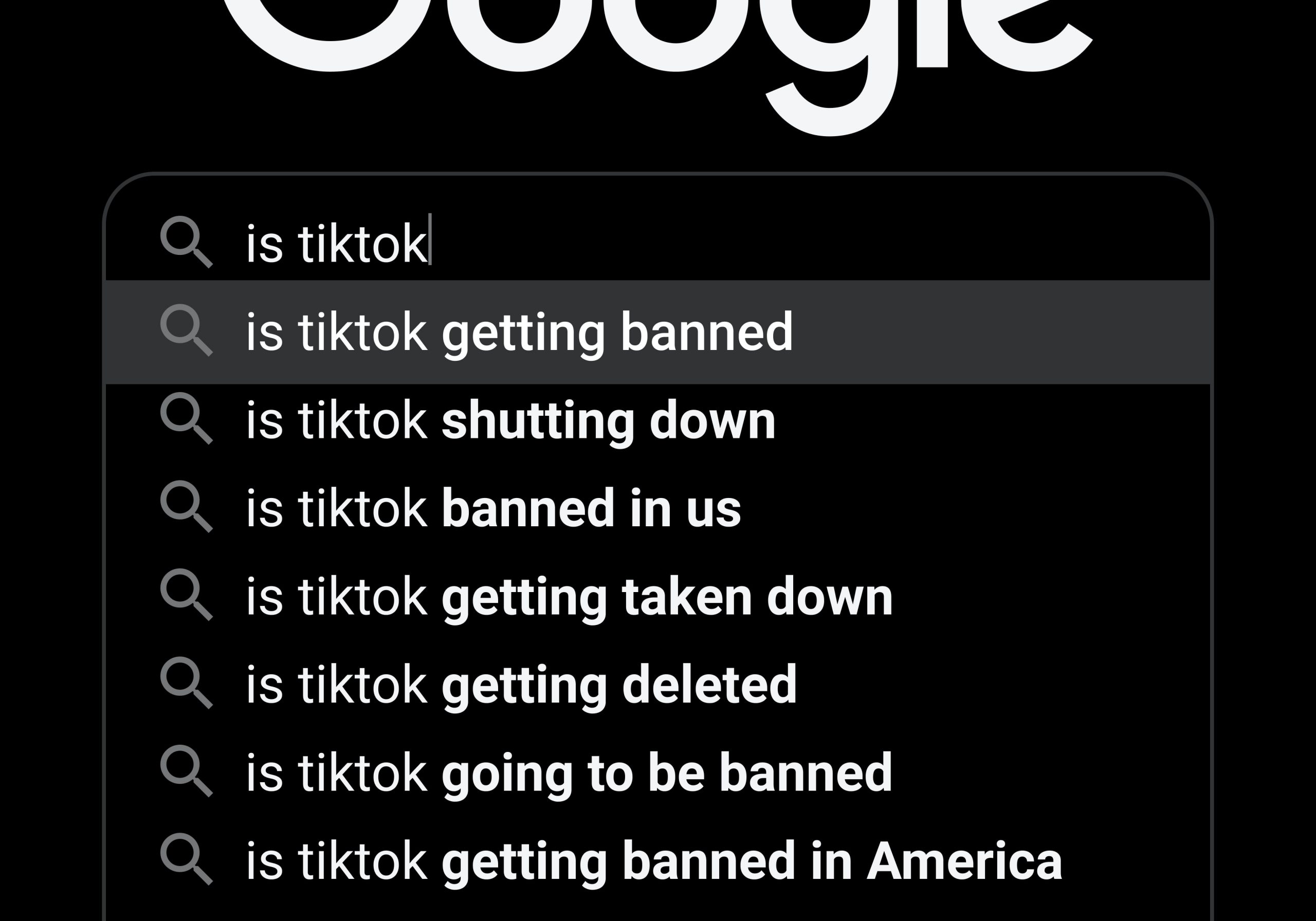Search intent: how to use it to impact the results
Search (or user) intent is when google matches user’s queries with their content index.
Quick Links
To rank for a relevant page you need to publish the right content with the right format for the right people.
In this article l explain how your content’s user intent influences your chances to be visible on Google, and consequently sales generation, subscribers, leads, and alike.
Types of search intent that influence results
Search intent is the purpose of a search engine query.
For example when searching for the ‘best tent for family camping’, you can identify:
- A list of tents to choose from
- A description of their features
- An overview of what to look for in a tent
If my query is ‘how to screenshot on mac?’, I should expect to find:
- A list of steps
- Screenshots of the action
- Video tutorials
Type of search intent
There are several ways to identify search intent. I am going to focus on the most commonly used one which is based on four main variants:
- Informational
- Navigational
- Commercial
- Transactional
Below I have outlined their main characteristics.
Informational
Informational intent is when you are searching for information about a topic. This can be generic or specific, according to the type of query.
Informational keywords provide more detail about a large number of topics. They are therefore some of the most popular terms searched online. They also tend to have a higher number of monthly searches, also known as search volume.
Examples of informational search intents are:
- Quick and easy dinner ideas
- Why is the sky blue?
- How to get rid of fruit flies
- Serena Williams
Many informational keywords are questions. They can also be more generic head terms such as ‘melon benefits’ and or long tail keywords like ‘chinese bitter melon health benefits’, people, objects, actions, etc.
Common keyword modifiers are: what, why, when, where, who, how, guide, ideas, tips
Navigational
Navigational search intent is when you are looking for a specific website or webpage. In this situation you already know the brand or the website you’re searching for and need the search engine to direct you there.
Examples of navigational search intents are:
- Ebay
- 1password login
- missguided
- webmd calorie counter
Navigational intent queries are usually related to products, brands or business names that you know, and you want to reach their domain or a page quickly.
Common keyword modifiers are: [brand], [product name], [product name] + brand, [topic] + brand
Commercial
Commercial search intent is when you are looking to buy a type of product or service, but are not yet ready to buy as you are researching options such as quality, features, comparisons, reviews, etc.
Examples of commercial search intent:
- best mattress for children under 2
- apple vs android
- samsung a20 review
- best attractions in new york for families
Commercial intent queries are often reviews or comparisons, to aid choice. Keywords may mention modifiers to aid the search. Google recognises that users expect a list of products or services. An example of a generic query that is actually commercial is ‘twin mattress’, where most of the results are related to ‘best of’, see image 1.
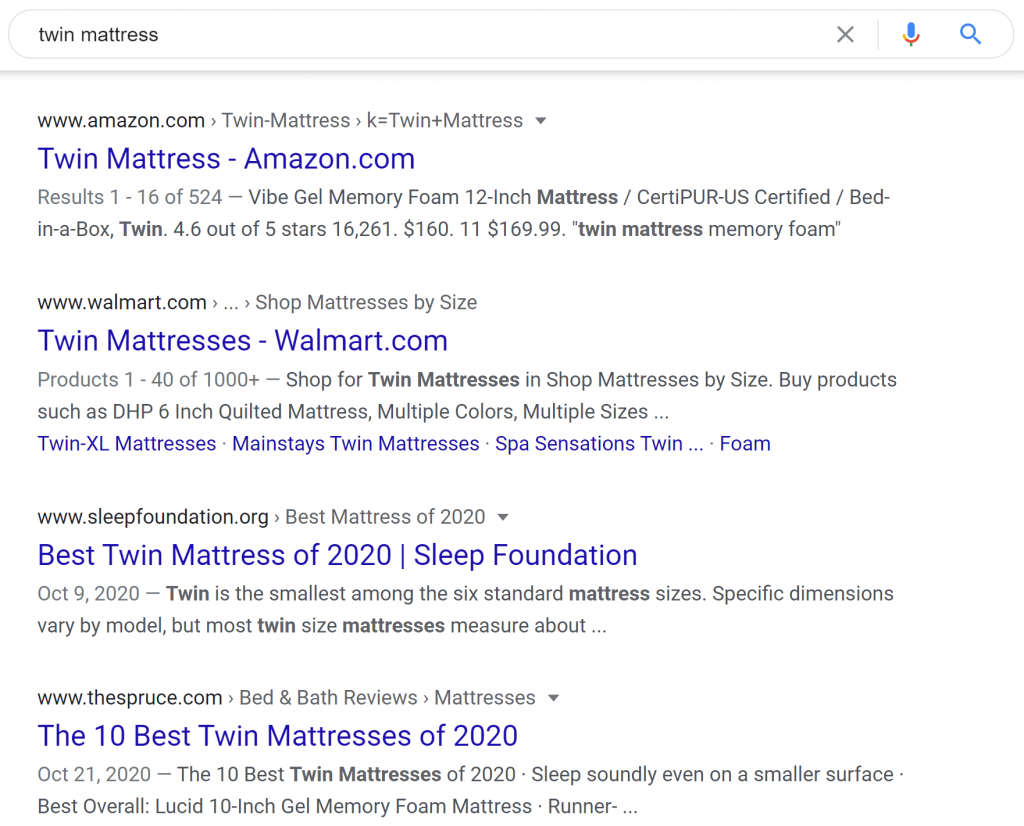
Image 1
Common keyword modifiers are: best, top, review, vs, [feature]
Transactional
Transactional search intent is when you are looking to take an action, such as buying, subscribing, contact, etc. As the product or service is already identified it is about where (shop/website) and or how (price/payment).
Examples of commercial search intent:
- buy dyson v7 animal
- directnic coupon code
- office 365 price
- laptop black friday
Transactional intent queries are usually the last stage of the funnel. Users want to solve their problem by purchasing a specific product, service, or by getting in touch with an organization.
Common keyword modifiers are: buy, coupon, city, cheap, price, subscribe, discount
How to optimize your page based on search intent
When creating a page you should know the search intent for the focus keyword.
Long form intent does not always rank higher than a 300 word piece.
For page optimization there are several factors to consider. The most important are the type of content people expect and what Google provides in the results page. Ensure that your focus keywords are right for your business based on your keyword research.
To rank for an ecommerce category page like ‘women’s red shoes’ creating a 2,000 word content is not beneficial. The screenshot below highlights that the search intent is different (shorter e-commerce oriented content). See image 2.
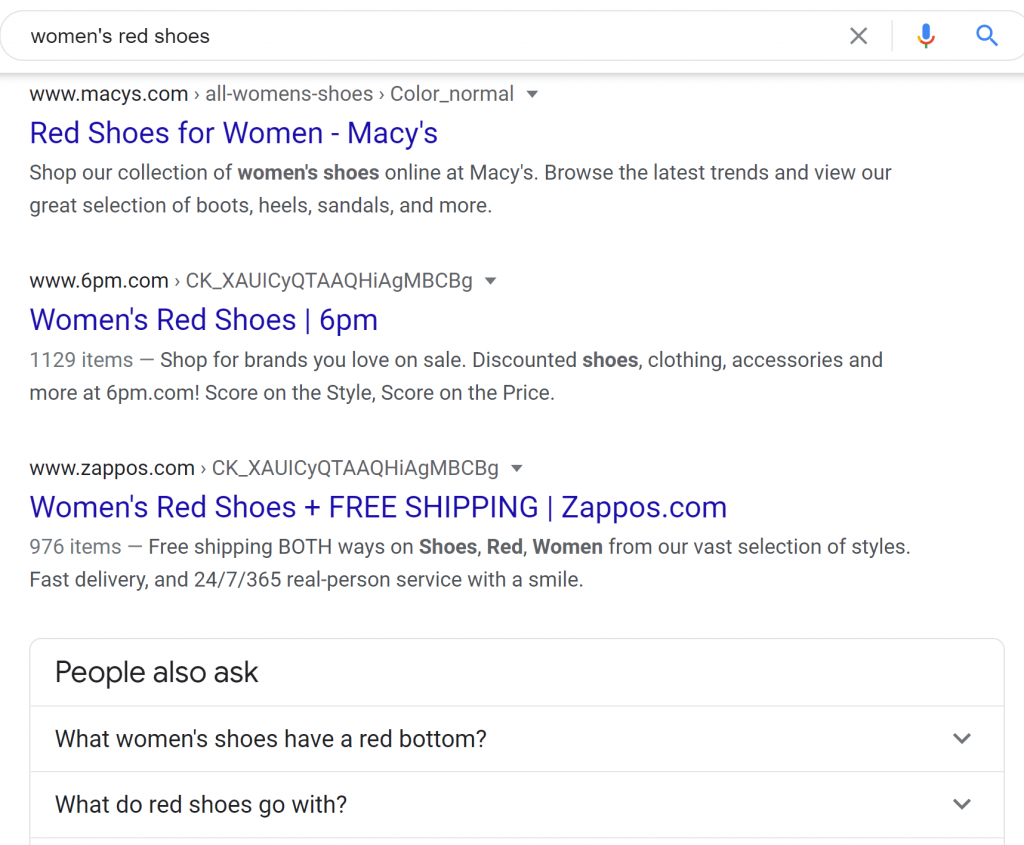
Image 2
The second half of this article focuses on creating the right content for the right intent.
Review the top results
The first action point is to check what currently ranks on Google’s search results.
Let’s analyze the following results for the query ‘things to do in new york’ as an example.
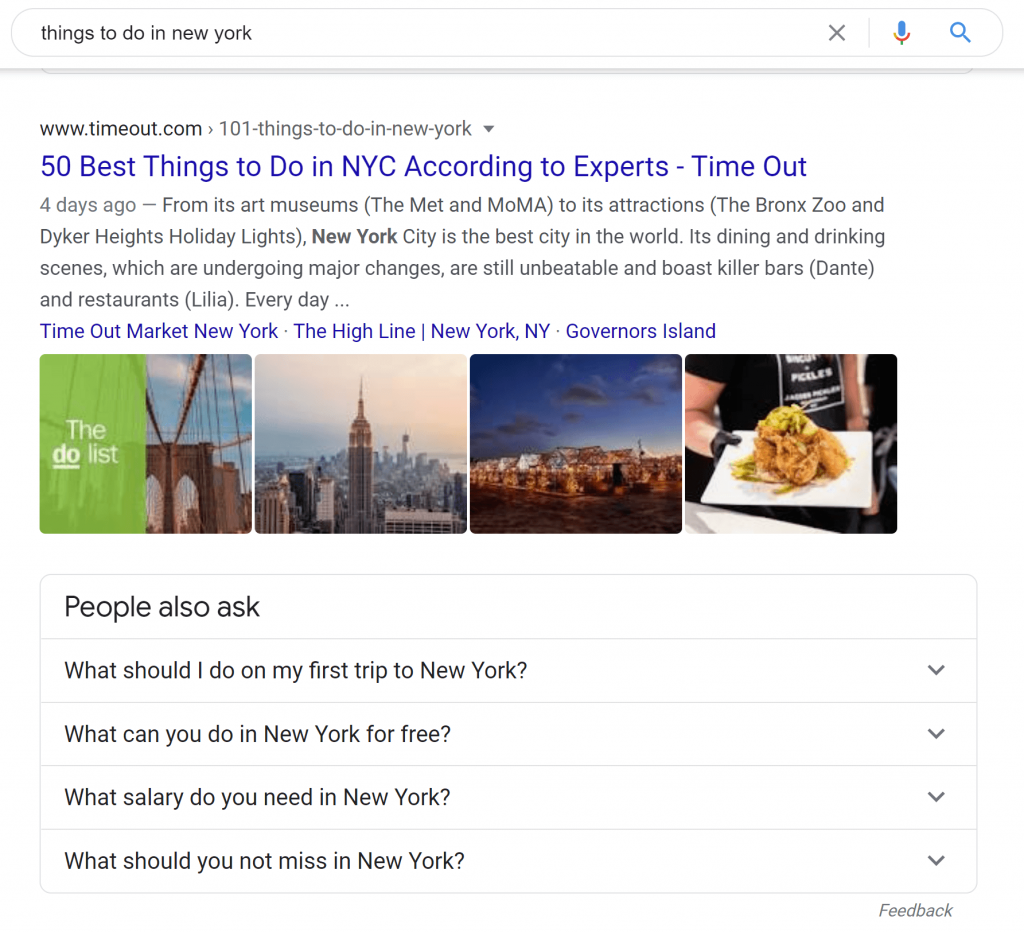
The results are commercial (best) with some questions and Google’s rich snippets. People are looking for a list of activities to do in New York..
It also shows a list of questions people also ask about the query which you can capitalise on.
If your goal is to promote an activity such as a tour or a museum, create a list article with the most relevant attractions including all possibilities and your product. This is the only way to appear on this kind of results.
Search current results. For some queries Google wants to see specific “entities”. Previous content that I worked on initially only listed less popular attractions and therefore only ranked on page 10+. When I added some popular venues it moved up to page 1.
Identify the content format
Content format is key. When searching for one of the queries mentioned earlier in the article, ‘how to screenshot on mac’ there is a specific type of results, see image 4.
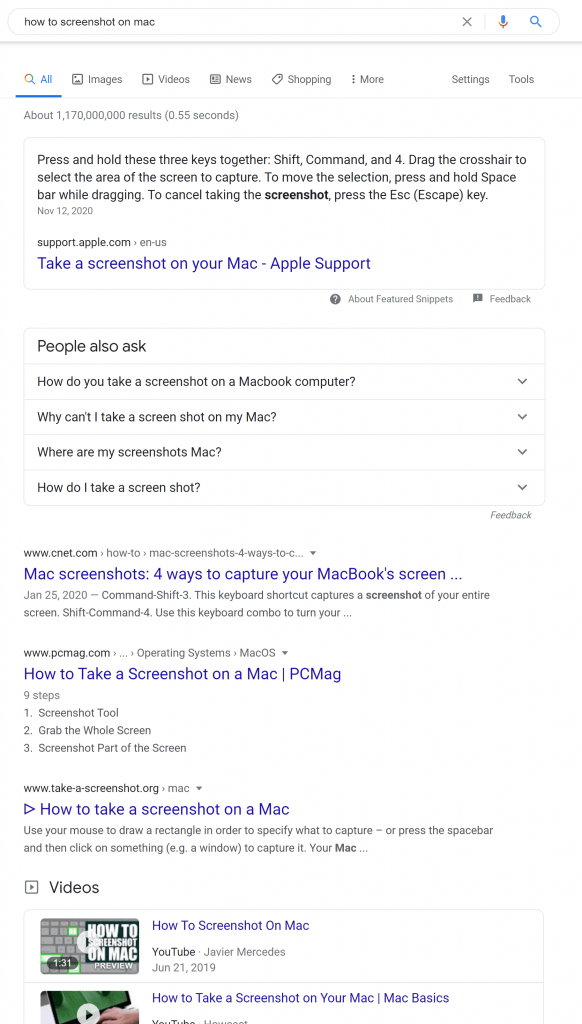
Image 4.
The most prominent formats for the query are how-to step-by-step text content and video tutorials.
When people search for this query, they expect to quickly understand the process. If you have a query identified in your keyword research, produce a page with a step-by-step format that includes a quick video, to rank your page.
People Also Asked
The box with the questions within the search results is called “People also asked”. This area includes some of the most popular questions asked along with a list of information to include in content creation. See image 5.
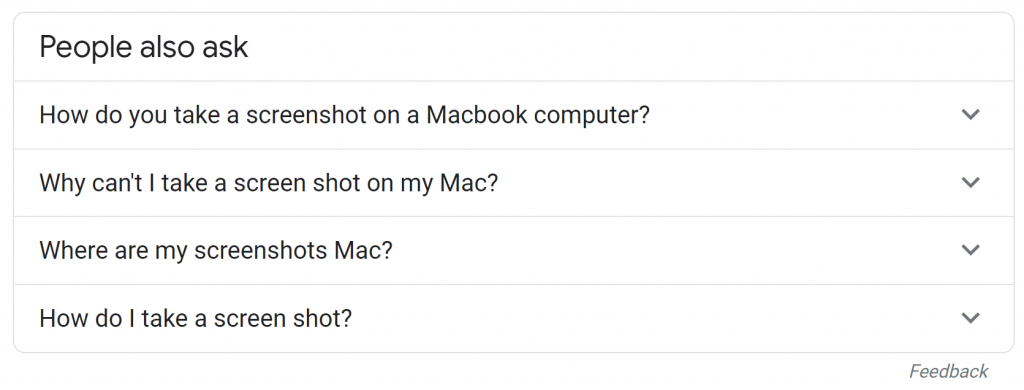
Image 5.
To deepen your research and obtain a bigger list of questions, I suggest using AlsoAsked.com. This is a free tool (no affiliation with the author) that provides multiple levels of questions related to a query.
Create buckets of keyword by search intent
Give each term in your keyword list a priority, based on SEO metrics as well as business goals.
To optimise this, split each term by buyers’ journey, search intent and content type, to plan resources for content strategy.
This improves content quality and relevance for the target audience, and increases conversions and achievement of business goals.
Below is an example of keywords split by search intent related to a mattress selling business:
Informational
- How to choose a mattress,
- How to stop snoring
- How to clean a mattress
Navigational
- Tuck mattresses
- Ikea mattresses
- Amazon mattresses
Commercial
- Mattresses near me
- Best mattress for 2 years old
- Casper mattress review
Transactional
- Buy mattress online
- Casper hybrid mattress cost
- Macy’s mattress coupon
Where to use search intent keywords
When publishing content, search intent keywords can be used with differing content.
Below is a general guide. Please bear in mind that some keywords can be used for multiple types of content.
Informational: content hubs, blog, e-books, tutorial
Navigational: location pages, login, product pages, landing pages related to your brand
Commercial: blog, landing pages, product, service, features, solutions, case study, implementation pages
Transactional: landing pages, product pages, coupon/discount pages,
Conclusion
Content creation should be relevant to your audience and their needs. Optimizing resources for user intent enables the right content to reach people more likely to convert.
Search intent is powerful when matched with a healthy website, keyword research, content creation and backlinks.
Author Bio

Francesco Baldini is a Freelance Lead Generation and SEO Consultant. He helps brands and SaaS companies increase conversion rates and sales. Francesco has worked in Digital Marketing for over 10 years in client and agency side environments. He is originally from Italy but is now based in the UK.
Website: https://www.betakrea.net
Twitter: https://twitter.com/betakrea
LinkedIn: https://www.linkedin.com/in/francescobaldini/
How to Use AI-Powered SEO Tools for WordPress eCommerce
SEO is a critical factor in the success of any e-commerce WordPress store. As competition…
0 Comments11 Minutes
Why Short-Form Videos Are the Future of Content Marketing
Your Instagram customers spend over 50% of their time watching short-form videos and reels. Rather…
0 Comments12 Minutes
The Role of Digital Marketing in Business Growth
Online marketing touches every aspect of a business, whether it is initiating the idea or for an…
0 Comments3 Minutes
AI Meets Authenticity: Balancing Automation and Human Touch in Content Marketing
Is your brand starting to sound like a robot? In a world where algorithms write faster than any…
0 Comments8 Minutes
Essential Tools for Enhancing Web Design and UX Hosting
Have you ever visited a website that felt slow, clunky, or confusing? A website that is poorly…
0 Comments11 Minutes
How a Mini Cart Transformed My Store’s Shopping Experience
Okay, real talk—running an online store is hard. You think you’ve got everything figured out, you…
0 Comments9 Minutes
Balancing Your Security Initiatives With Industry Compliance Requirements
Managing a business today comes with a number of daily battles that need to be fought. Resources…
0 Comments11 Minutes
Best plugins to enhance the customer shopping experience
Customer experience is a key part of every online store. A good experience helps customers find…
0 Comments7 Minutes
